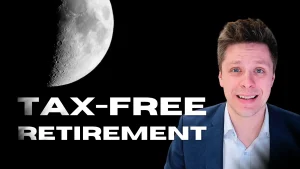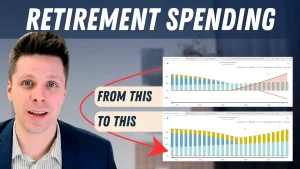For those of you lucky enough to have a defined benefit pension plan, you may have to decide whether to take your pension as a monthly income or as a lump sum payout upon retiring. There isn’t a universally accepted answer when deciding between these two options, as it mostly depends on your personal circumstances. Just because a retired co-worker chose one option, doesn’t mean the same choice is right for you.
Remember, once you choose, your choice cannot be reversed. If you decide to take the monthly income, you can’t ask your pension for an extra lump sum payment the next time you want to go on a vacation. In much the same way, you can’t pay back the lump sum to your pension if you feel that managing it yourself is too much work.
How do I decide?
Several factors could affect your choice. An excellent place to start would be to build a financial plan with a side-by-side comparison of both options. This should include your overall expected retirement income from both your pension and savings. Once you know what you have to work with, I highly suggest reviewing the pros and cons of each option before making a decision.
Monthly Income
Pros:
- Straightforward choice
- Pays for life
- Unlikely to run out of funds
- You can spend everything you make
Choosing this option allows you to remain on an even keel. You received a regular income while working, and by choosing the monthly income option, you will continue to do so in retirement. You don’t need to be concerned with running out of funds as your pension will keep paying you for life. This allows you to spend every dollar you make because you know there’s another cheque coming just around the corner. See 5 reasons you should take the monthly pension for more details.
Cons:
- Pension sustainability is out of your hands
- The benefit amount cannot be adjusted
- No leftover value to your estate
By choosing the monthly income option, you are putting your trust in the pension’s hands. You are relying on your previous employer to continue operating a profitable business. This isn’t always the case as we’ve seen with companies such as Sears and Nortel. This can result in a reduction of your monthly payments.
Another issue that arises is your inability to adjust your regular payments. You may want to spend more at the beginning of your retirement while you are still healthy and take a lower income in your later years. A good reason to spend more at the beginning of your retirement is that you can’t take your pension plan with you upon death. If you have a spouse, they will likely continue to receive payments, but upon their death, all payments stop. That means there’s no residual amount left for your kids or your favorite charity. All the funds you were promised (outside of your contributions) would remain in the pension plan.
Lump sum
Pros:
- Flexible
- Tax-efficient
- Suitable for short life expectancies
- Estate options
By choosing the lump sum option, you are giving yourself lifestyle flexibility. You can increase your income in the early years of your retirement to allow you to do things while you are still healthy. This flexibility will enable you to manipulate your income, which in the long term, can be more tax efficient. If you have a reason to suspect your lifespan will be shorter than the norm, you can adjust your income to reflect this. The funds that are remaining once you and your spouse pass away can be used to help your kids, grandkids, or a favorite charity. See 5 reasons you should take your pension as a lump sum for more details
Cons:
- Initial tax bill
- Requires a disciplined withdrawal schedule
- Relies on investment performance
Since interest rates are so low, there will likely be a portion of the lump sum that is immediately taxable as income. If you don’t have the means to shelter this income in an RRSP account, you will have less in your pension pot to draw from thanks to taxes. The lump sum option means that you must stick to a disciplined withdrawal plan. If you are the type of person who spends everything at their disposal, then this option isn’t for you. There is also an investment component related to taking the lump sum. If your investments don’t grow as anticipated or if you take a significant loss, you could find yourself running out of funds in retirement.
It’s your retirement – plan wisely
This isn’t a decision to be made lightly or without careful analysis. A well-developed financial plan, along with an in-depth review of the pros and cons of each option will help you to determine the best option for your needs.
If you are approaching retirement and would like to review your options, please don’t hesitate to take advantage of my free one-hour consultation. Simply get in touch here or by emailing me at msabourin@harbourfrontwealth.com






